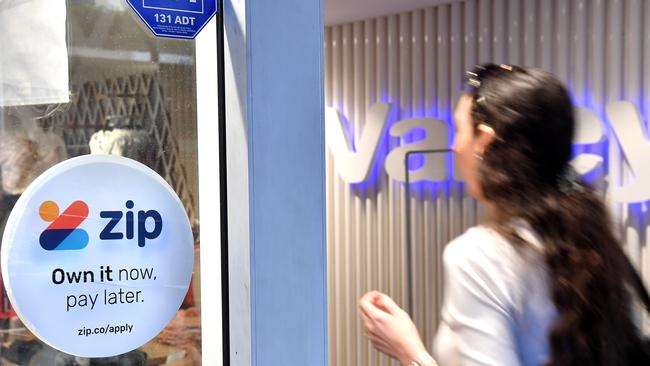
The collapse of US banks this week has turned the attention back on the future of companies in the Australian listed financial services space, with Zip.Co continuing to gain attention.
Sources say one of the two buy now, pay later providers has recently been approaching banks for additional funding, which some believe could signal that further efforts could be afoot to raise equity if funding cannot be sought elsewhere.
Zip has said it was part of its normal course of business to be engaged with numerous banks, regarding its securitisation and debt funding programs – and based on its path to positive earnings before interest, tax, depreciation and amortisation for the first half of the 2024 financial year, it did not see a need to raise more capital.
But Zip.Co made a $241m statutory loss for the six months to December and had cash losses of $33m in the half, leaving it with $78.5m of total cash and liquidity at December.
Some believe that if the BNPL group continues to burn cash at its current rate – even if it halved its loss – it would run out of money.
Zip said it expects its cash burn to improve by up to 50 per cent in the second half of the 2023 financial year, and additional cash inflows from business sales and closures are expected during the remaining part of the financial year and will contribute directly to the group’s available cash and liquidity.
Zip says it will repatriate almost $40m-$60m from exiting non-core markets.
Zip holds the customer receivables on its balance sheet and as customers repay their balances this delivers net cash inflows to Zip.
But some are sceptical, taking the view that closing operations will cost the company more money.
On Tuesday, the company’s share price fell 2.88 per cent to 50c, taking its market value to $388.3m.
Market experts say that Zip has some businesses that it could sell to raise some additional short-term cash – potentially about $50m.
But the company’s biggest issue is that it has some convertible bonds that still need to be repaid in 2025 worth about $330m.
Some believe that with a marginal profitability forecast in the next two years, there was no way that the internal cash generation will be enough to pay the liability.
During the half, the company paid $43m to retire $40m of interest-bearing notes in September last year.
It also retired $70m of convertible notes for 23c in the dollar in December, and some say the fact that the company was able to do this shows that the noteholders do not have an expectation that they will get the full value back on their investment.
At its half year result, Zip Co said it was set to retreat from its remaining international outposts, leaving the firm operating in the United States, Australia and New Zealand.
This was after targeting 14 countries for international expansion.
Yet some believe the company would be better off also shutting its US business in its quest to push for profitability and preserve cash.
Zip said the US remained a core market and continued to deliver strong results in the last quarter.
Co-founder, managing director Larry Diamond, relocated to New York in November.
But no doubt weighing on Zip further in the months ahead will be the higher funding costs, as higher interest rates also mean consumers are set to curb discretionary spending.
RBC analysts last month warned at the time of the result that the BNPL lender may be running out of time to turn its losses around, with dwindling cash.
“With non-operating cash inflows uncertain and the expectations for continued operating cash outflows, we remain concerned about Zip’s liquidity runway position,” they wrote.
The company raised $400m in April 2021 to fund growth and raised $12m in December through Shaw and Partners to pay for the redemption of some of its convertible notes early.




To join the conversation, please log in. Don't have an account? Register
Join the conversation, you are commenting as Logout